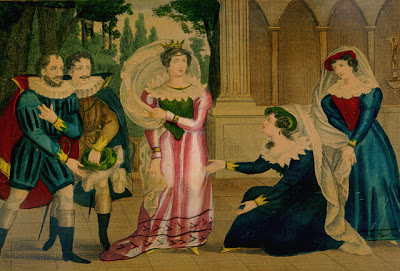England was under the crown of House of Tudor around 500 years ago. Henry VII acquired the kingdom of England after winning the War of the Roses. This was the era of flourish of art and culture in Europe. The era, which we know as renaissance age, was going on in Europe, and people were taking more and more interest in the various genres of art. The flamboyant renaissance dresses also belonged to the same era. Besides, the science and technology were also growing during that period.
In this scenario, Tudor monarchs seem to be busy in their own affairs; however, their contribution in this development up to some extent cannot be denied. The first king Henry VII was a peaceful monarch, and he also tried to make peace with France in the year 1492. His son Henry VIII was thought to be of good nature in his early years, but later on his rapport went down. Moreover, he married six wives just for producing a male heir. Finally, he succeeded in this, and Edward was born. We find mixed traits in the nature of Henry. He took part in the protestant reformation actively and declared himself the head of Church of England. Moreover, he also played some role in development of architecture. But, declaring his daughters Mary and Elizabeth illegitimate presents the negative side of his nature. On the other hand, execution of his own wife Anne Boleyn by him despite the lack of evidences also can also not be considered as justified.
After the death of Henry, his only son Edward VI was enthroned in the small age of 9. His devotion towards Protestantism despite his small age seems strange. He tried to secure protestant faith in England. He also changed the will of his own father for this purpose, according to which his older sisters were in the line of succession after him. Edward declared his cousin Lady Jane Gray as his heir. His wish could not be fulfilled as she lost support and Mary disposed him by assembling the army within the short time span of nine days.
Mary proved to be a barbaric queen, as she started killing the innocent Protestants in order to establish the catholic faith again in England. Because of this act, she is known today as “bloody Mary”. Moreover, she married Philip II of Spain for producing the catholic heir, but could not be successful. In the early years, he kept his sister Elizabeth in Tower of London, but she had no other option than declaring her as her heir in the later stages.
Finally, Elizabeth I became the monarch, who was liberal in various aspects. The art and culture flourished a lot in her reign. She herself was an art lover and liked painting and fashion. The medieval shirts worn by her are the fashion statements in wedding parties and various other events, in today’s scenario also.




